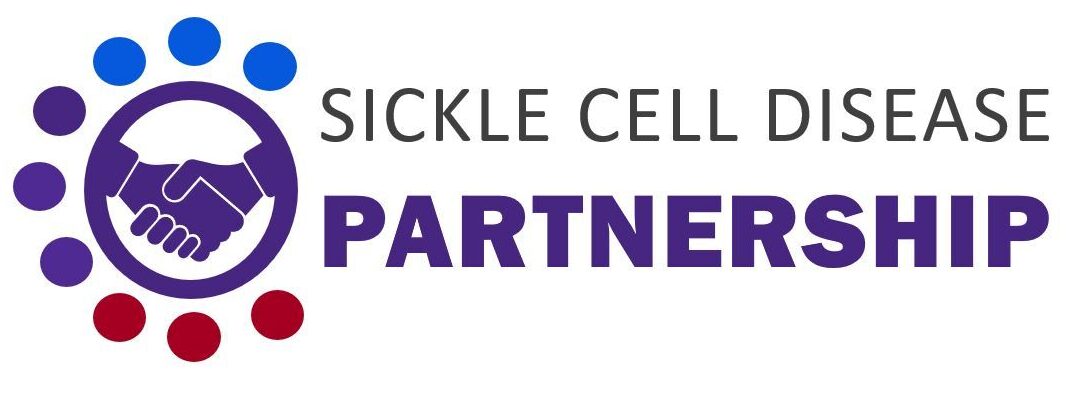About Sickle Cell Disease
What is Sickle Cell Disease?
Sickle Cell Disease is a rare, genetic blood disorder that primarily affects Black individuals.
Sickle Cell Disease is inherited when a child receives two sickle cell genes—one from each parent. A person with Sickle Cell Disease is born with it.
Healthy red blood cells are round, and they move through small blood vessels to carry oxygen to all parts of the body. In someone who has Sickle Cell Disease, the red blood cells become hard and sticky and look like a C-shaped farm tool called a “sickle.”
The sickle cells die early, which causes a constant shortage of red blood cells. Also, when they travel through small blood vessels, they get stuck and clog the blood flow. This can cause pain and other serious problems such infection, acute chest syndrome, lung problems, severe pain, and stroke.
Facts About Sickle Cell Disease
- An estimated 100,000 Americans are living with Sickle Cell Disease.1
- The majority of Sickle Cell Disease patients are Black, and an estimated 1 in 365 Black newborns will have Sickle Cell Disease.2
- Sickle Cell Disease occurs among about 1 out of every 16,300 Hispanic-American births.3
- The CDC has noted that “People with Sickle Cell Disease have less access to comprehensive team care than people with genetic disorders such as hemophilia and cystic fibrosis.”4
- People with Sickle Cell Disease start to have signs of the disease during the first year of life, usually around 5 months of age. Symptoms and complications of Sickle Cell Disease are different for each person and can range from mild to severe.5
- People with Sickle Cell Disease can experience different complications, but some of the common ones are very serious and all can be disruptive to an individual’s life.6
- There is no single best treatment for all people with Sickle Cell Disease. Treatment options are different for each person depending on the symptoms.7
- Currently, the only cure for Sickle Cell Disease is bone marrow or stem cell transplant. Bone marrow is a soft, fatty tissue inside the center of the bones where blood cells are made. A bone marrow or stem cell transplant is a procedure that takes healthy cells that form blood from one person—the donor—and puts them into someone whose bone marrow is not working properly. Bone marrow or stem cell transplants are very risky, and can have serious side effects, including death. Bone marrow or stem cell transplants are generally used only in cases of severe Sickle Cell Disease for children who have minimal organ damage from the disease.8
- Research suggests that global prevalence of Sickle Cell Disease will have increased by over 25 percent by 2050.9
Resources & Publications
Treating Sickle Cell Disease: An Opportunity to Concretely Improve Lives and Increase Health Equity
In recent years, policymakers have shown increased recognition of and interest in reducing health disparities and improving health equity. Today, too many Americans do not have equitable access to care and treatment due to outdated policies and biased practices.
Sickle Cell Disease Congressional Priorities
View the Sickle Cell Disease Partnership’s Congressional priorities.
September 20 Congressional Briefing on Sickle Cell Disease
Learn how to join us for the September Congressional briefing.
About the Sickle Cell Disease Partnership
Learn all about Sickle Cell Disease Partnership and our mission.
Sickle Cell Disease Educational Chart Pack
Learn all about Sickle Cell Disease (SCD).
Sickle Cell Disease Infographic
View some quick facts about Sickle Cell Disease (SCD).
The Sickle Cell Disease Congressional Action Plan
The Partnership’s 2023 legislative Policy Plan for Sickle Cell Disease (SCD) is built on several pillars.
The National Heart, Lung, and Blood Institute
The National Heart Lung and Blood Institute has developed comprehensive, evidence-based guidelines for the diagnosis and management of Sickle Cell Disease.
Centers for Disease Control and Prevention
Learn about the Centers for Disease Control and Prevention’s Sickle Cell Disease data collection efforts.
National Institutes of Health
The National Institutes of Health’s Sickle Cell Disease directory provides patients, caregivers, and healthcare professionals a list of ongoing clinical trials.
Centers for Medicare and Medicaid Services
The Centers for Medicare and Medicaid Services released a fact sheet that shows key facts on Medicaid beneficiaries with Sickle Cell Disease, including prevalence, demographics, healthcare utilization, and more.
Centers for Disease Control and Prevention's Real Stories from People Living with Sickle Cell Disease
The Centers for Disease Control and Prevention provides real stories of patients living with Sickle Cell Disease.
National Institute of Health's Today’s Faces of Sickle Cell Disease
The National Institutes of Health shares real stories of strength and perseverance. The stories will highlight people living with Sickle Cell Disease, their loved ones, clinicians, and the researchers whose work offers hope for a cure.
